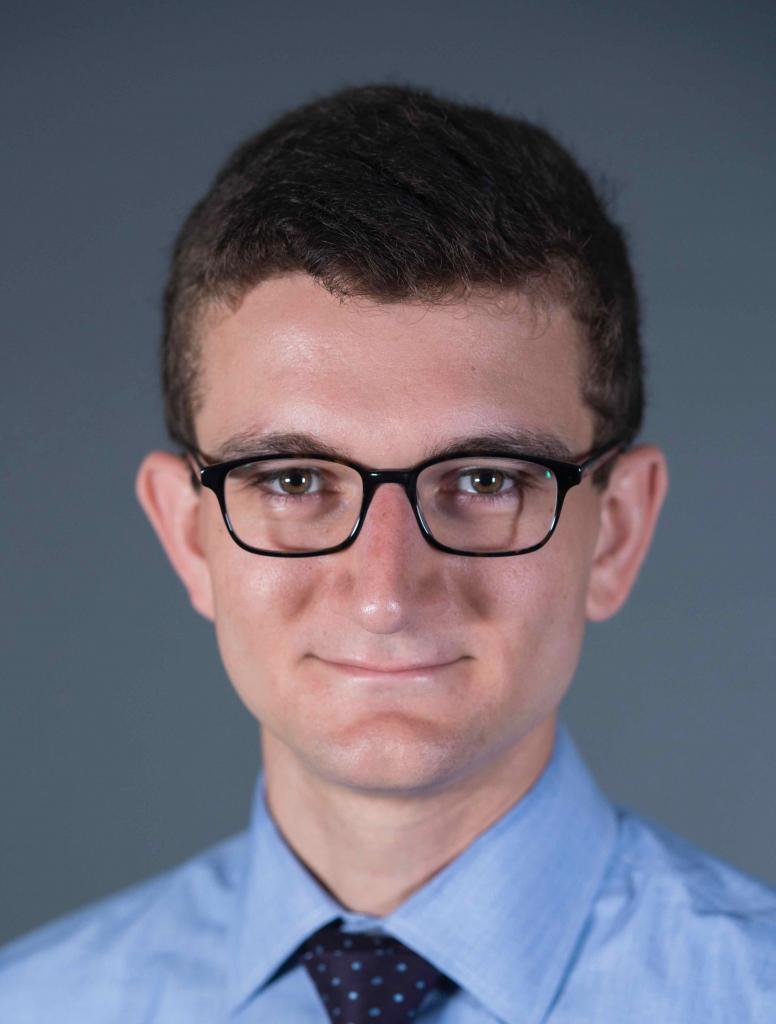Another Bomb Drops: Initial Thoughts on Trump Asking Comey to Kill the Flynn Investigation
The New York Times is reporting that President Donald Trump asked then-FBI Director James Comey to drop the FBI’s investigation into former National Security Adviser Michael Flynn.

Published by The Lawfare Institute
in Cooperation With

The New York Times is reporting that President Donald Trump asked then-FBI Director James Comey to drop the FBI’s investigation into former National Security Adviser Michael Flynn. The conversation allegedly occurred in a February meeting in the Oval Office, the day after Flynn was removed from his post when it came to light that he had lied about conversations he had during the transition with Russian Ambassador Sergey Kislyak.
The revelation comes barely 24 hours after the Washington Post bombshell yesterday that President Trump had revealed highly classified information to Russian officials during an Oval Office visit.
The Times story describes a memorandum written by Comey immediately after the meeting, recording what was said for posterity. As the Times reports:
Mr. Comey had been in the Oval Office that day with other senior national security officials for a terrorism threat briefing. When the meeting ended, Mr. Trump told those present—including Mr. Pence and Attorney General Jeff Sessions—to leave the room except for Mr. Comey.
Alone in the Oval Office, Mr. Trump began the discussion by condemning leaks to the news media, saying that Mr. Comey should consider putting reporters in prison for publishing classified information, according to one of Mr. Comey’s associates.
Mr. Trump then turned the discussion to Mr. Flynn.
After writing up a memo that outlined the meeting, Mr. Comey shared it with senior F.B.I. officials. Mr. Comey and his aides perceived Mr. Trump’s comments as an effort to influence the investigation, but they decided that they would try to keep the conversation secret — even from the F.B.I. agents working on the Russia investigation — so the details of the conversation would not affect the investigation.
The memo allegedly reports that President Trump said to Director Comey, “I hope you can see your way clear to letting this go, to letting Flynn go. He is a good guy. I hope you can let this go.” Trump reportedly told Comey that Flynn had done nothing wrong.
Significantly, the Times reports that not only did Comey detail this exchange in a contemporaneous memo, but also that “Mr. Comey created similar memos—including some that are classified—about every phone call and meeting he had with the president.” This was “part of a paper trail Mr. Comey created documenting what he perceived as the president’s improper efforts to influence an ongoing investigation.”
The White House has denied Comey’s account:
In a statement, the White House denied the version of events in the memo.
“While the president has repeatedly expressed his view that General Flynn is a decent man who served and protected our country, the president has never asked Mr. Comey or anyone else to end any investigation, including any investigation involving General Flynn,” the statement said. “The president has the utmost respect for our law enforcement agencies, and all investigations. This is not a truthful or accurate portrayal of the conversation between the president and Mr. Comey.”
The most immediate legal question is whether the President's conduct amounts to obstruction of justice, either on its own or in combination with other actions. Lawfare writers discussed the question of obstruction of justice in some detail following the firing of Comey last week.
It is important to remember that the Times story contains only snippets of the reported Comey memo, so the analysis below is thus necessarily preliminary, based on the limited facts we have access to at this point. Much remains unknown and the specific facts that will emerge in the days to come matter a great deal.
Helen Murillo explained the basic elements of obstruction as they might apply to Comey’s firing:
Under 18 U.S.C. § 1505, a felony offense is committed by anyone who “corruptly, or by threats or force, or by any threatening letter or communication influences, obstructs, or impedes or endeavors to influence, obstruct, or impede the due and proper administration of the law under which any pending proceeding is being had before any department or agency of the United States, or the due and proper exercise of the power of inquiry under which any inquiry or investigation in being had by either House, or any committee of either House or any joint committee of the Congress.”
An accompanying code section, 18 U.S.C. § 1515(b), defines “corruptly” as “acting with an improper purpose, personally or by influencing another, including making a false or misleading statement, or withholding, concealing, altering, or destroying a document or other information” (emphasis added). This is where obstruction of justice intersects with the false statements law. If you knowingly and willfully make a false statement of material fact in a federal government proceeding, you’ve potentially violated § 1001, and when you add an objective to influence, obstruct, or impede an investigation, you’ve now possibly violated § 1505 as well. Perjury can intersect with obstruction of justice in the same way.
Under the statute, a “proceeding” can be an investigation. Section 1503 criminalizes the same conduct in judicial proceedings. So obstruction during an investigation might violate § 1505, while if that same investigation leads to a criminal prosecution, obstruction during the prosecution itself would violate § 1503. The individual also has to know that a proceeding is happening in order to violate the statute, and must have the intent to obstruct—that is, act with the purpose of obstructing, even if they don’t succeed.
Obstruction convictions are difficult to obtain. Despite broad statutory language, to obtain a criminal conviction, the government must demonstrate an attempt to “influence, obstruct, or impede” the administration of the law in a pending proceeding. As cited in the prior piece, the U.S. Attorneys’ Manual explains the requirement of proof of three elements: “(1) there was a proceeding pending before a department or agency of the United States; (2) the defendant knew of or had a reasonably founded belief that the proceeding was pending; and (3) the defendant corruptly endeavored to influence, obstruct, or impede the due and proper administration of the law under which the proceeding was pending.”
Here, the first two elements are abundantly clear. Assuming the Times account is correct, there was clearly an investigation, and Trump clearly knew about it. Notably, fifteen days earlier, then-Acting Attorney General Sally Yates had sat down with White House Counsel Don McGahn and informed him of her concerns over Flynn’s connections with Russian officials—including the fact that Flynn had been interviewed by the FBI. According to White House Press Secretary Sean Spicer, McGahn briefed the President and “a small group of senior advisors” following his conversations with Yates.
As Murillo wrote in the prior piece, the third element of an obstruction charge is the hardest to prove, because it depends on showing an improper motive. A criminal case would require proving that Trump acted corruptly with the specific intent of interfering with the investigation. That’s very hard when you’re dealing with the firing of an FBI director, a subject about which the President may have said all kinds of contrary things. Proving his precise state of mind beyond a reasonable doubt might be very tricky.
On the other hand, in this instance there’s at least prima facie evidence that would tend to support inferences of obstruction. According to the memo, after all, a conversation took place in which the President asked the FBI director to “see your way clear to letting this go, to letting Flynn go,” and, in the Times’s words, “told Mr. Comey that Mr. Flynn had done nothing wrong.” So assuming the memo is accurate, there’s at least an act that a reasonable person would understand as seeking to influence the investigation. As the Times story notes, “[t]he existence of Mr. Trump’s request is the clearest evidence that the president has tried to directly influence the Justice Department and F.B.I. investigation into links between Mr. Trump’s associated and Russia.” While in and of itself, the request could be understood as just a plea for mercy, which is not obviously obstructive, the fact that it comes from a superior with the power to remove the investigator—alongside the fact that Trump then did fire Comey—makes obstruction a plausible reading of the apparent facts.
There are other elements here that also make a case more plausible. For one thing, there’s a contemporaneous memo. There’s also a witness: Comey himself, who could presumably testify as to the circumstances of the meeting. To the extent anyone claimed his story was a subsequent fabrication, the memo could be used as evidence to rebut that claim. This is a potentially powerful combination, particularly when the witness (Comey) is a dramatically more credible character than the subject about whom he would be testifying (Trump). Notably, House Oversight Committee Chairman Jason Chaffetz (R-UT) appears to have already committed to subpoenaing the Comey memo, if necessary, to get it.
There are also details in the story that may indicate intent—particularly the Times’ reporting that Trump spoke to Comey alone in the Oval Office after asking Vice President Pence and Attorney General Sessions to leave the room. If Trump was planning to pressure Comey into dropping an ongoing investigation, it seems reasonable that he would not want the Vice President and Attorney General in the room while doing so. Recall that the dinner with Comey in which Trump pushed for the FBI Director to pledge his loyalty was also one-on-one.
Quite apart from the question of whether the specific conversation might qualify as an obstruction, the new story dramatically raises the stakes on a line of argument that former White House Counsel Bob Bauer explored in two posts last week. Writing about President Trump’s assertion that he had directly asked Director Comey whether he was personally under investigation, Bauer suggested that it is also Trump’s pattern of behavior that might open the President up to obstruction charges:
It does seem clear, however, that the President has opened himself up to a line of inquiry into whether in this call, perhaps in conjunction with other actions, represents attempted obstruction of justice. After all, it appears that the subject came up not once, but as many as three times, and that on at least one of those occasions the President directly initiated the question. Do these multiple requests or demands for reassurance, by their very repetitiveness, imply that the President was bringing pressure on the person in charge of a criminal investigation to limit it—at least insofar as Mr. Trump was concerned, and perhaps even beyond?
Remember that the president’s potentially obstructive behavior was not limited to allegedly asking repeatedly whether he was under investigation. Rather, Bauer details other acts that might reasonably be understood as data points in a broader obstructive trend:
The picture that Mr. Trump has managed to create so far consists of the following:
- The admission that he sought repeated assurances about his legal exposure in an ongoing criminal investigation
- The pursuit of those reassurances at a time when he was quite actively holding open the possibility that Mr. Comey might not hold onto his job. (Apparently one of these conversations took place over dinner—as it was being served, was the President making it clear that Mr. Comey might have “to sing for his supper”?)
- The admission that in firing Mr. Comey, he was moved decisively by his frustration over the FBI's handling of the Russia probe.
- The President's repeated very public statements, heard by all, including those charged with investigating the matter, that he views the Russia probe as having no merit. Responsible for the faithful execution of the laws and the integrity of the system of justice, Mr. Trump has chosen to actively dispute the basis for an ongoing FBI investigation that affects his interests.
- The repeated adjustments to the story the White House originally told about the circumstances surrounding the decision to dismiss Mr. Comey. As noted in the earlier posting, it is not advantageous to somebody under suspicion to be altering his story—or, in this case, changing it in every material detail.
Now add to all of this already suggestive material the allegation that President Trump actually went a step further and asked the FBI Director to drop a case he didn’t like.
A submission to an investigating officer as to how a case should be handled is, to be sure, not always an obstruction: think of a defense attorney asking a prosecutor, “Come on, can’t you just let my client off easy this time?” What makes this particular case troubling is that Trump was acting not as just any person, but as the President of the United States, who is also the chief legal officer of the executive branch. Particularly coupled with Comey’s dismissal shortly after the request was made and the fact that the broader investigation of which Flynn was a part was one in which Trump’s own interests were at issue, the argument that we see here a pattern of obstruction begins to looks plausible.
But there’s a big catch in all of this that people should not overlook: This case is not going to be prosecuted in federal court like a normal obstruction case—at least not in the first instance. Whether the President is immune from indictment during his time in office is an open question; the longstanding position of the Executive Branch is that the sitting President cannot be prosecuted. At a minimum, in this view, he has to be impeached by the House of Representatives and removed from office by the Senate first. Even if you don’t accept this position, the Justice Department under Attorney General Sessions is not going to indict the sitting president. So the immediate question is not whether this pattern of behavior—or any individual component of it—could support a prosecution and criminal conviction for obstruction of justice. It’s whether it would support an impeachment in the House and a removal vote in the Senate.
Historically, obstruction of justice articles of impeachment do elaborate a pattern of conduct. The first article of impeachment against Richard Nixon, for instance, included making false statements to investigators, withholding evidence, counseling witnesses to lie or give misleading testimony, and “interfering or endeavoring to interfere with the conduct of investigations by the Department of Justice of the United States [and] the Federal Bureau of Investigation.”
The critical point is that impeachment for obstruction of justice is ultimately not just a legal question; it’s also a political question, albeit a political question highly inflected by the law and often discussed in the language of the law. The boundaries of the impeachable offense are not coextensive with the boundaries of the criminal law. There are things that are not criminal that are certainly impeachable, and there are crimes that are generally regarded as too trivial to trigger the Constitution’s standard in Article II § 4 of “Treason, Bribery, and other high Crimes and Misdemeanors.” The great constitutional scholar Charles Black, in an excellent volume entitled, Impeachment: A Handbook written during the Watergate era, describes this point in vivid detail.
So the real question boils down to this: Does the pattern of conduct that is emerging, in the view of a majority of the House of Representatives and a two-thirds majority of the Senate, constitute an obstruction of justice of a type that is grounds for impeachment and removal?









.png?sfvrsn=48e6afb0_5)

